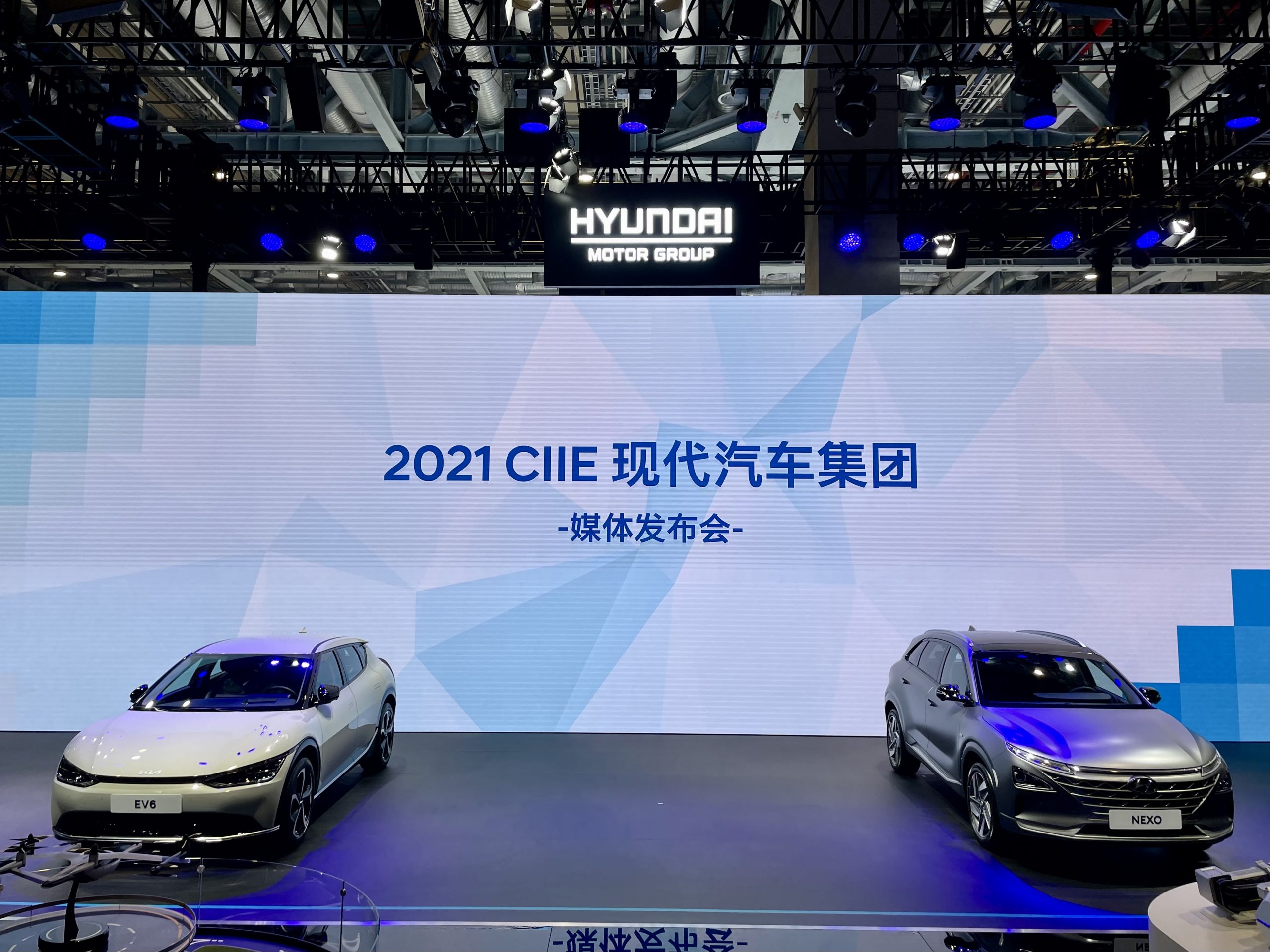On November 6th, at the CIIE, Hyundai showcased the development path of “Hydrogen + Electric” technology and exhibited related products.
Under the national strategic guidance of “striving to achieve carbon peak before 2030 and carbon neutrality before 2060,” the Hyundai Group will implement the “Hydrogen + Electric” strategy in China.
Application of Hydrogen Fuel Technology
Hydrogen-Powered Autonomous Transport Vehicle
%E8%BF%9B%E5%8D%9A%E4%BC%9A%E4%B8%AD%E5%9B%BD%E9%A6%96%E7%A7%80%EF%BC%8C%E5%B1%95%E7%8E%B0%E5%BC%80%E5%88%9B%E6%80%A7%E7%9A%84%E9%9B%B6%E6%8E%92%E6%94%BE%E6%99%BA%E8%83%BD%E7%89%A9%E6%B5%81%E8%A7%A3%E5%86%B3%E6%96%B9%E6%A1%88_20211107182341.jpg)
In the commercial vehicle field, Hyundai has launched the Hydrogen-powered autonomous transport vehicle (TRAILER DRONE). As a fully automated container transport system, it is powered by a hydrogen fuel cell system, and the number of hydrogen tanks can be tailored to the driving range, with a single fill of hydrogen allowing for a range of more than 1,000 kilometers, emitting only clean water during operation.
The Hydrogen-powered autonomous transport vehicle (TRAILER DRONE) can achieve completely independent four-wheel steering, allowing it to maneuver flexibly in ports and narrow city roads, even with a large body size.
At the same time, it is equipped with a large number of high-precision sensors and V2X intelligent vehicle-to-vehicle communication technology, enabling smart judgment of the driving route and actual road conditions, and safely and efficiently completing long-distance logistics transportation.
Hydrogen Fuel Cell Module%E7%BA%A7%E5%A4%A7%E5%8A%9F%E7%8E%87%E5%BA%94%E6%80%A5%E7%94%B5%E6%BA%90%E7%B3%BB%E7%BB%9F_20211107194547.jpg)
Modern has also developed a hydrogen fuel cell energy module system called “Energy Crystal”, which can be stacked to form a high-power emergency power supply system of 500 kW or 1 MW (megawatt) level. The system has a smaller size compared to traditional power sources, can output high-power currents, and has the advantage of “zero emission” power generation.
Hydrogen Energy Emergency Rescue Vehicle
%E6%90%AD%E8%BD%BD%E6%B0%A2%E7%87%83%E6%96%99%E7%94%B5%E6%B1%A0%E5%8F%91%E7%94%B5%E7%B3%BB%E7%BB%9F%EF%BC%8C%E5%8F%AF%E4%B8%BA%E5%A4%84%E4%BA%8E%E5%81%8F%E8%BF%9C%E5%B4%8E%E5%B2%96%E5%9C%B0%E5%8C%BA%E7%9A%84%E8%BD%A6%E8%BE%86%E6%8F%90%E4%BE%9B%E5%85%85%E7%94%B5%E6%95%91%E6%8F%B4_20211107195328.jpg) Kia has combined hydrogen fuel cell systems and robust off-road specialty vehicles to launch the Rescue Hydrogen Generator Vehicle (RHGV), which can provide charging support for vehicles in remote and rugged areas and can provide both single-phase 220 V and three-phase 380 V power at the same time.
Kia has combined hydrogen fuel cell systems and robust off-road specialty vehicles to launch the Rescue Hydrogen Generator Vehicle (RHGV), which can provide charging support for vehicles in remote and rugged areas and can provide both single-phase 220 V and three-phase 380 V power at the same time.
Mobile Hydrogen Power Generation System
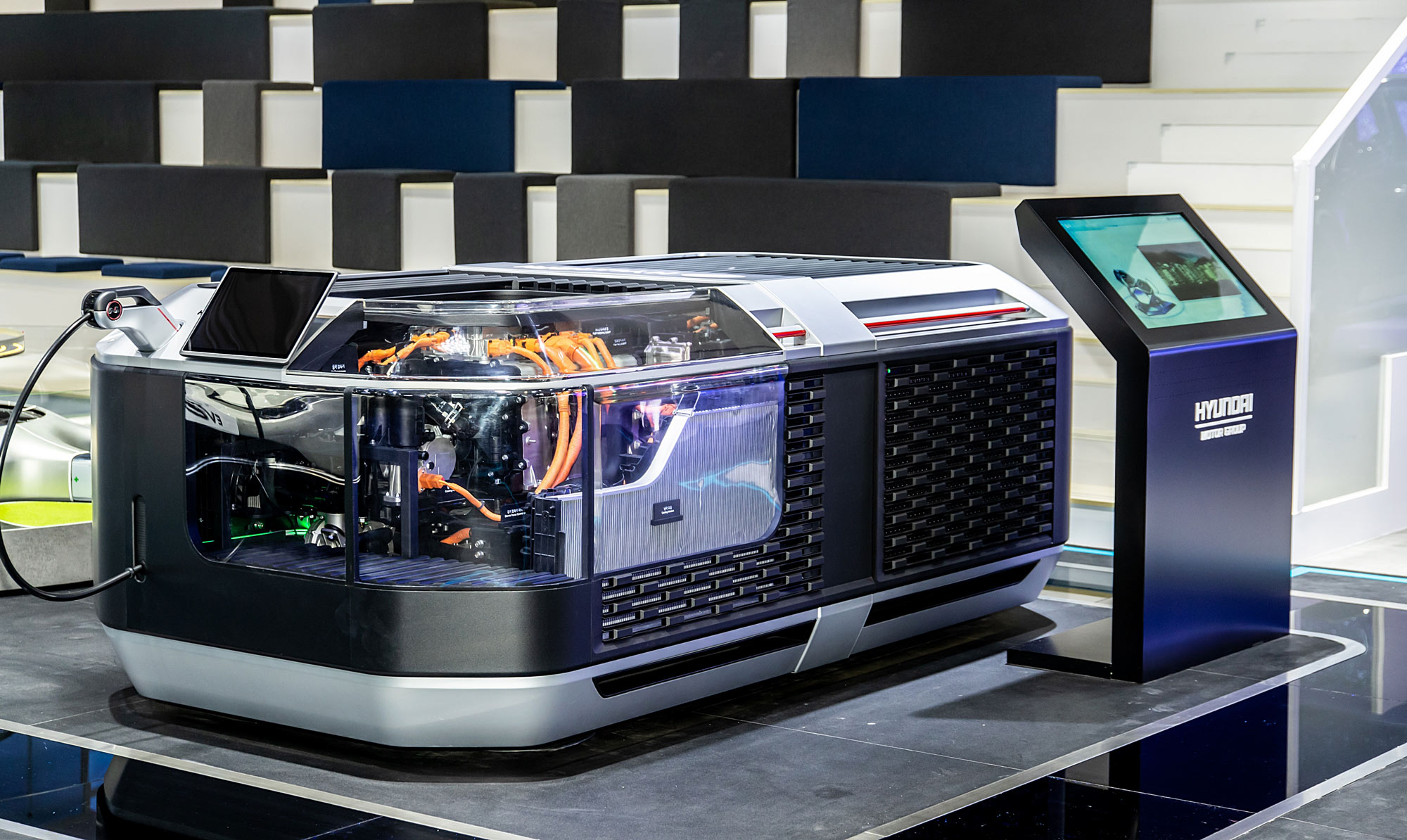
Hyundai Motor Group’s mobile hydrogen fuel cell power generation system not only provides power for household vehicles and electrical facilities, but also provides fast charging for pure electric racing cars.
This year, HTWO, Hyundai’s exclusive brand for hydrogen fuel cell systems, provided hydrogen fuel cell power generation systems for all pure electric racing cars in the world’s first electric house racing event, PURE ETCR (Electric Touring Car Racing).
The portable hydrogen fuel cell power generation system has a power output of up to 160 kW and can fully charge two electric cars with 65 kWh batteries in one hour. The racing cars also have “zero carbon emissions.”
Chinese Market
For the Chinese market, Hyundai will expand its new energy product matrix to 21 models by 2030, covering hybrid cars and hydrogen fuel cell vehicles, laying the foundation for China’s local electrification transformation.
In the future, global models such as the Hyundai IONIQ 5, IONIQ 6, and Kia EV6 will enter the Chinese market successively. In the second half of 2021, Beijing Hyundai will launch the Tucson HEV hybrid model. Dongfeng Yueda Kia will add HEV hybrid versions to each new model.### NEXO Enters China
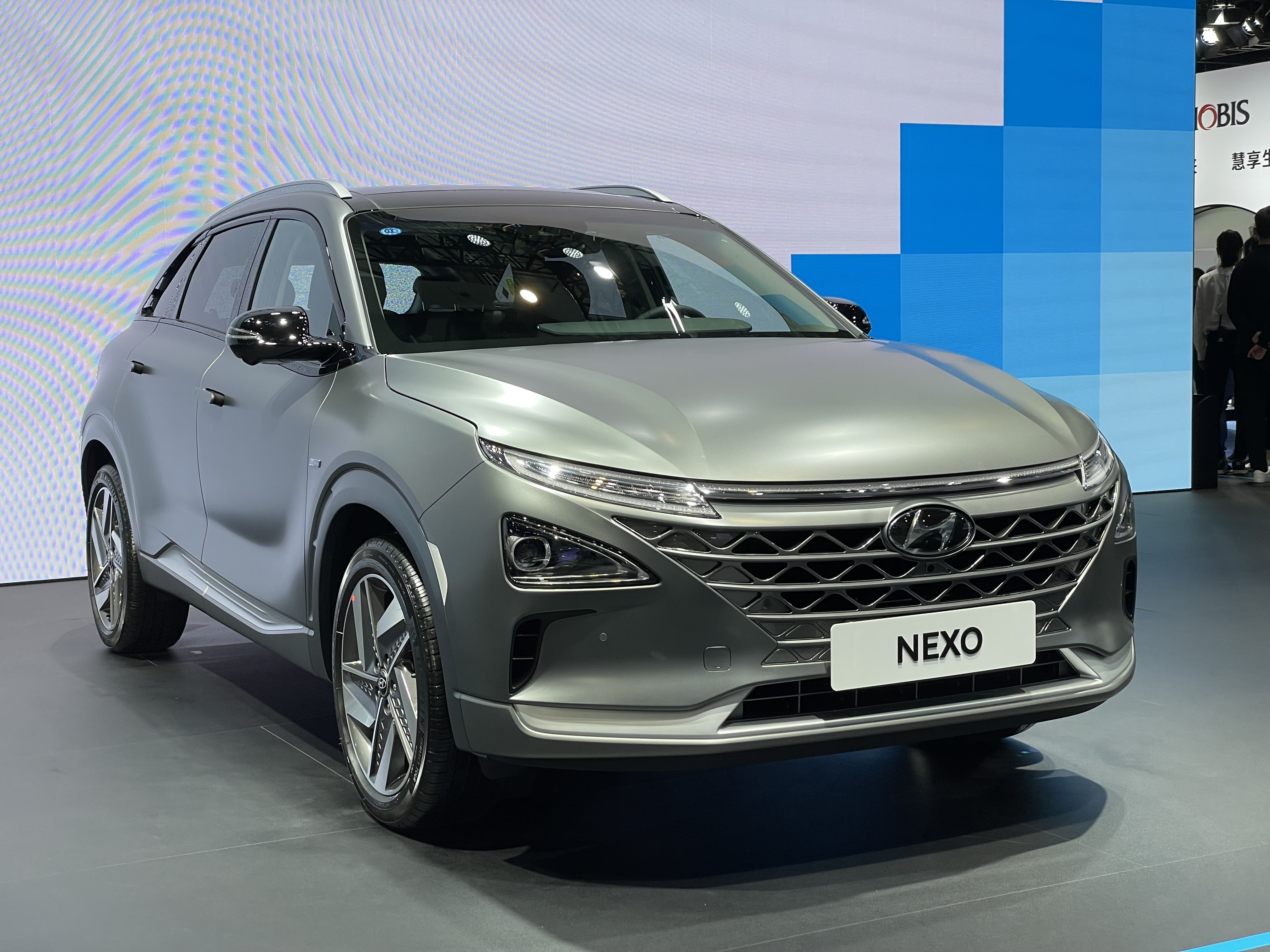
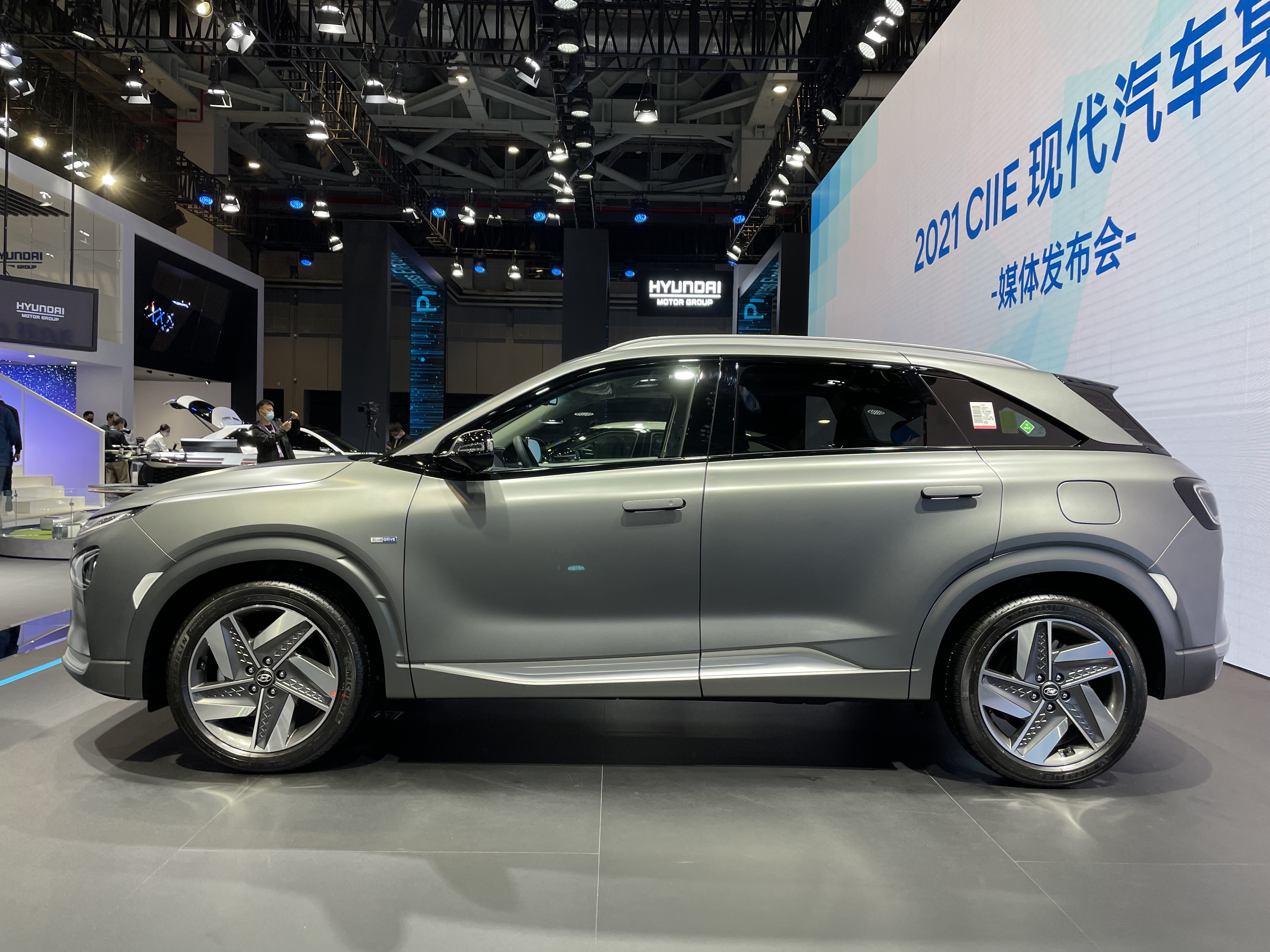
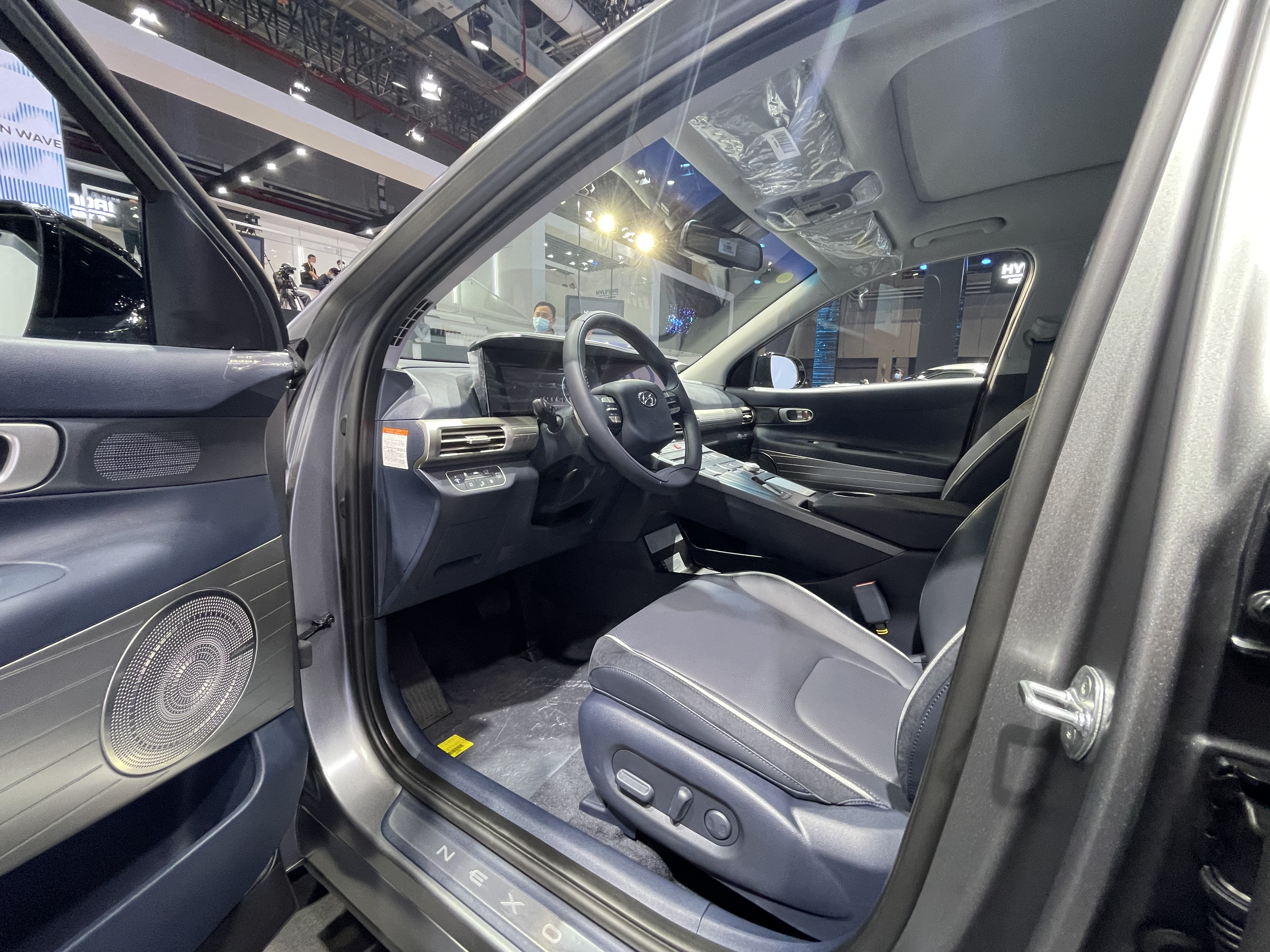
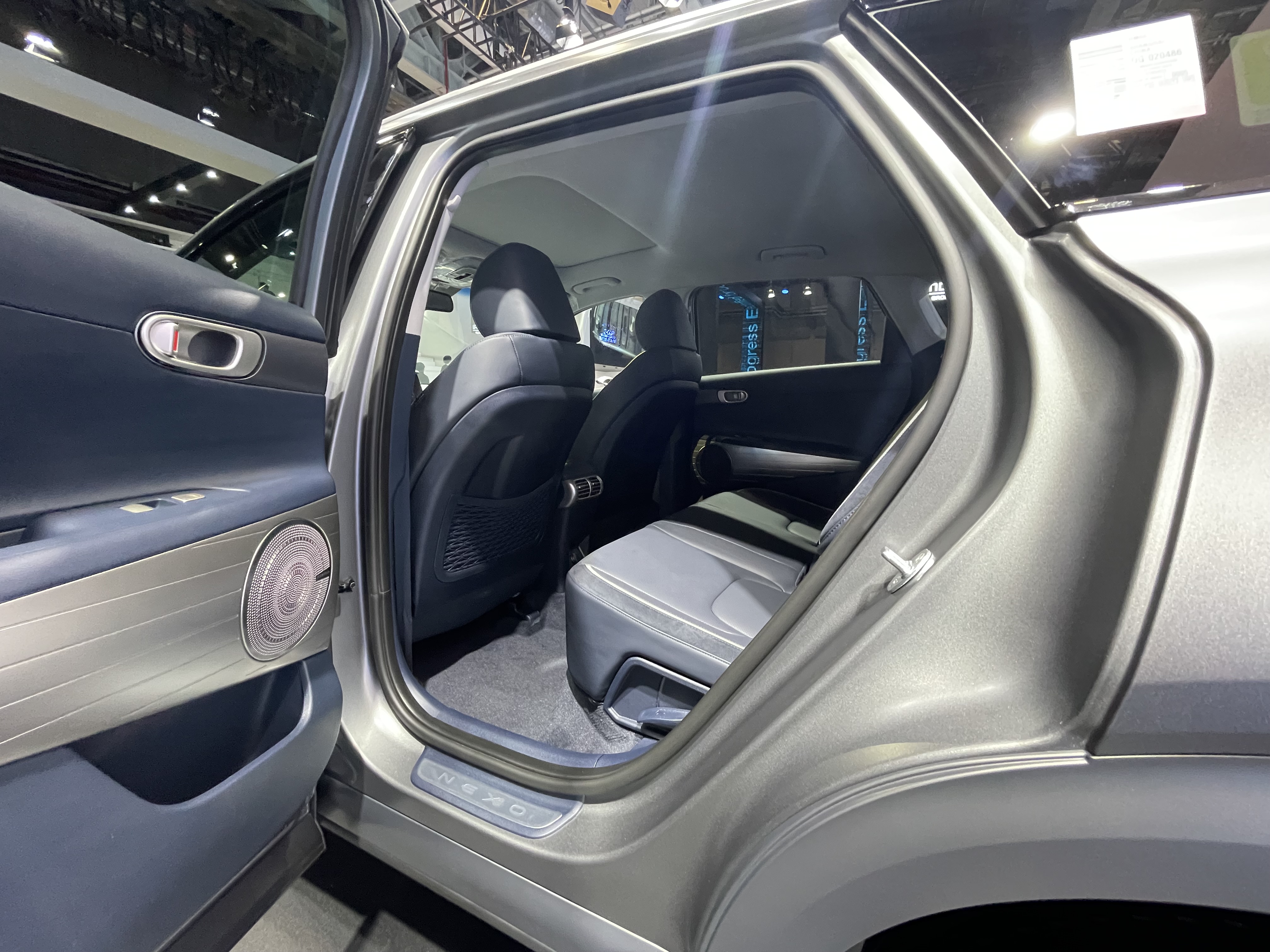
The Chinese version of hydrogen fuel cell vehicle NEXO made its debut at this year’s Import Expo.
The second-generation NEXO has already been put into practical use in countries such as the United States, the United Kingdom, and Australia through sales and leasing. As of October this year, the world’s first hydrogen fuel cell SUV NEXO has sold over 20,000 units globally.
The mass-produced hydrogen fuel cell system has twice won the “Ward’s 10 Best Engines” award from the world’s most authoritative organization.
The Chinese version of NEXO strictly follows China’s relevant regulatory requirements and is a commercial hydrogen fuel cell passenger vehicle developed for the Chinese market. After the Import Expo, the Chinese version of NEXO will soon enter the Chinese market and start commercial trial operation, but its official landing time in China is currently unknown.
The World’s First Overseas Hydrogen Fuel Cell System Production Base Settles in Guangzhou
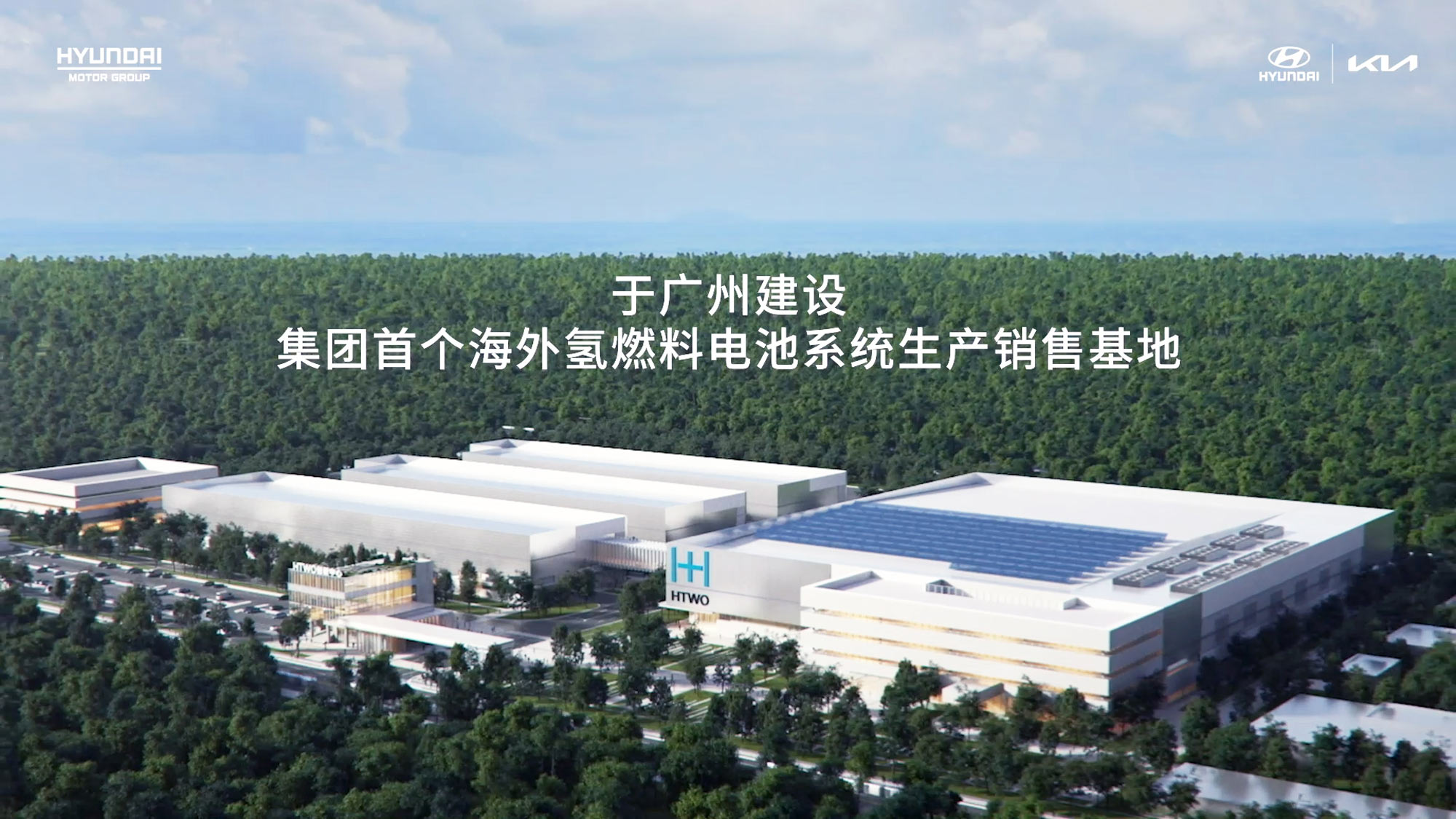
Hyundai’s first overseas hydrogen fuel cell system production and sales base has officially settled in Guangzhou, China.The first large-scale hydrogen fuel cell system production facility, exclusively named “HTWO” after the fuel cell system brand of Hyundai Motor Group, is set to be built. By 2030, the total investment of Hyundai Motor Group will reach 8.5 billion yuan (including the operating cost of the factory).
HTWO Guangzhou is expected to be officially completed and put into operation in the second half of 2022. At that time, it will be built into a comprehensive base including hydrogen fuel cell system production factory, research center, and innovation center. The initial annual production capacity plan is 6,500 sets, and the production supply capacity will be expanded timely based on the demand of the Chinese market and policies.
The MECA R&D Center Settled in Shanghai
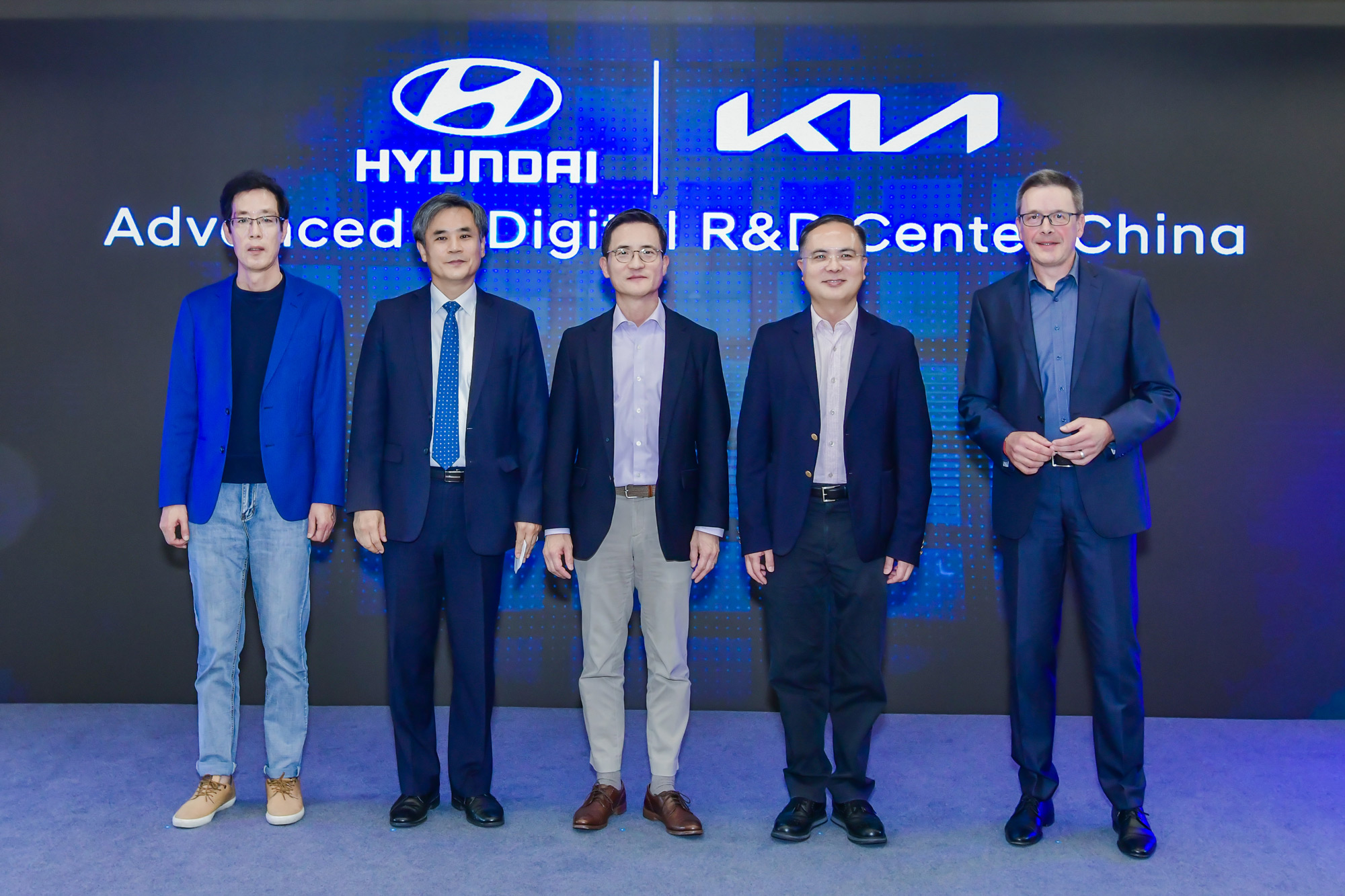
On October 18th of this year, the Hyundai Motor Group’s MECA R&D Center was officially opened and put into operation in Shanghai, which is the first overseas MECA digital R&D center of Hyundai Motor Group. The center mainly focuses on four major technology directions, including mobile travel, electrification, Internet technology, and automatic driving, to assist the group in accelerating the construction of a local forward-looking R&D system in China.
As an important milestone in the implementation of Hyundai Motor Group’s new China strategy, the MECA R&D Center in China will play a key role in expanding the group’s research and development layout in China.
Small-group Media Interview
After the release event ended, I participated in a small-group media interview with Woo Changsun, GM of Hyundai Hydrogen Fuel Cell (Guangzhou) Co., Ltd., and Li Hongpeng, Vice President of Hyundai Motor Group (China).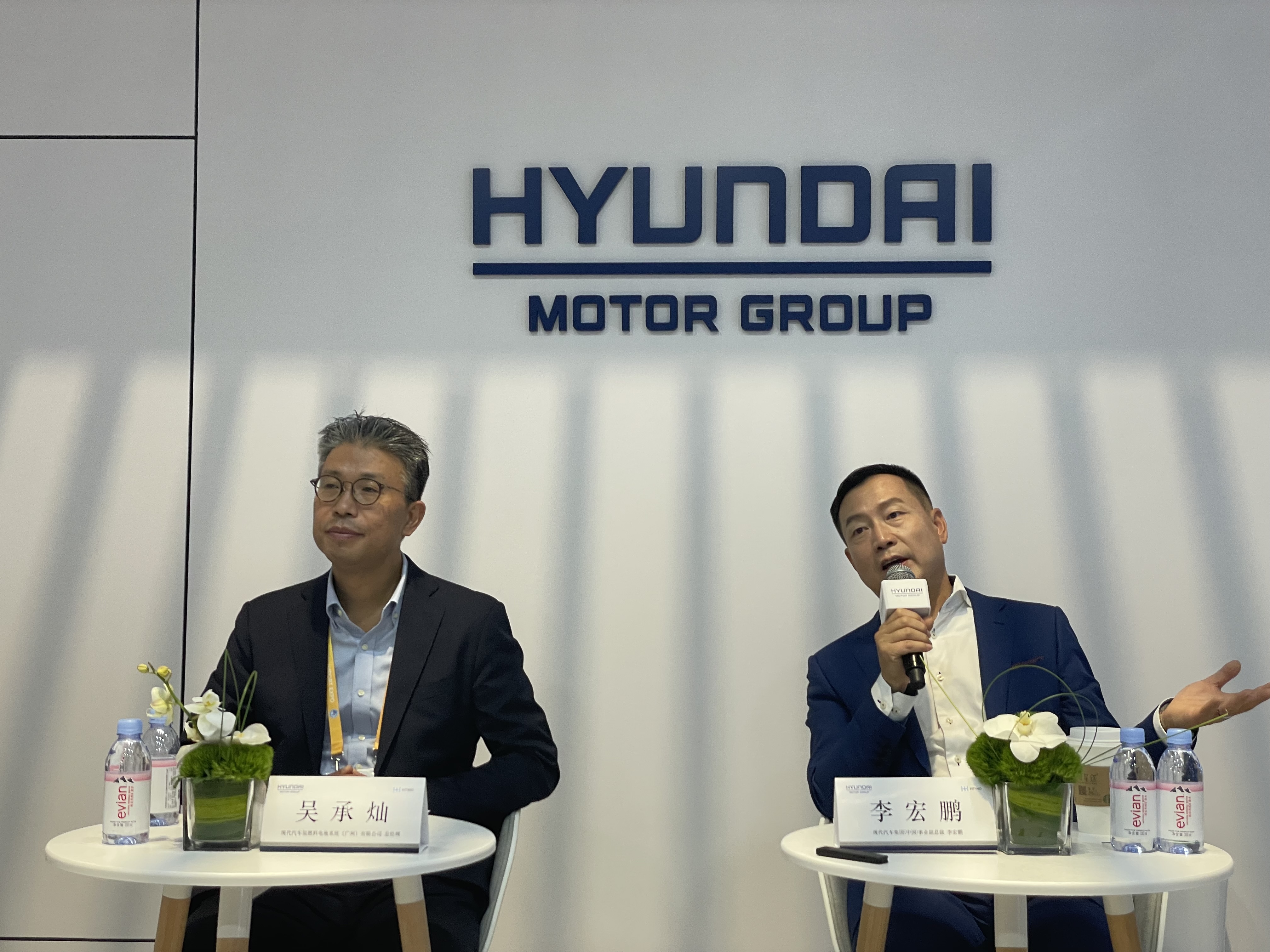
The following is a summary of the group chat (transcribed from handwriting):
Li:
Hydrogen energy is only an application scenario. Essentially, it is still electric-driven, and the final cost and safety will be effectively controlled.
After pure electric is accepted, hydrogen fuel will also be accepted.
Unmanned hydrogen-powered trucks are a major trend in commercial vehicles. Hydrogen cylinders can travel up to 1000 kilometers with existing technology. The advantage is that it is pollution-free and even stronger than electric power as the truck won’t be allowed to enter ports due to emission requirements.
Hydrogen is a broad concept, and hydrogen fuel cells are an application. Passenger vehicles are currently not as good as commercial vehicles mainly because the equipment is too bulky. Small size is also a future trend, and the height is currently around 25 cm. In the commercial vehicle field, it is greater than electric vehicles. In the passenger vehicle field, there will be a conversion to hydrogen energy when this proportion increases.
Due to energy anxiety, South Korea is more tolerant of energy use psychologically, and the government and companies are relatively consistent in promoting it.
In terms of technology, automakers have various research and development directions, and they will strive to be better in their advantageous fields. In the era of pure electric, battery suppliers are stronger than automakers, but as time goes by, battery standards will gradually emerge.
Question:
- When will NEXO start mass production and sales in China? In what form will it land in China?
Li:
There are differences in regulations, and they will be supplemented according to Chinese standards. However, it has already been produced under Chinese regulations and standards and can be sold directly, but policies and subsidies do not allow it.
In terms of landing, it is actually selling to the B end, but using scenarios of C end consumers. It can be sold to C end consumers, but it needs to run in the demonstration area.
There is no policy subsidy, and the price is relatively high, so it is better for the government to do it. It will first be used among business users as a pilot to promote the application of hydrogen fuel cell vehicles. Starting next year, we will gradually cooperate with more demonstration areas.
The specific proportion of commercial and passenger production is not clear and depends on policies. The recognition of carbon neutrality goals is the driving force for promotion.
- Why is the hydrogen energy strategy so important?
Wu:
Hyundai started researching in 1998 and launched the second-generation NEXO hydrogen-powered vehicle in 2018. The dual-carbon goal is a global trend, and hydrogen energy is the core of carbon neutrality and will be applied in many fields.
Li:
Now the dual-carbon goal is very clear, and energy substitution is needed. What is needed to achieve this? Hydrogen energy.
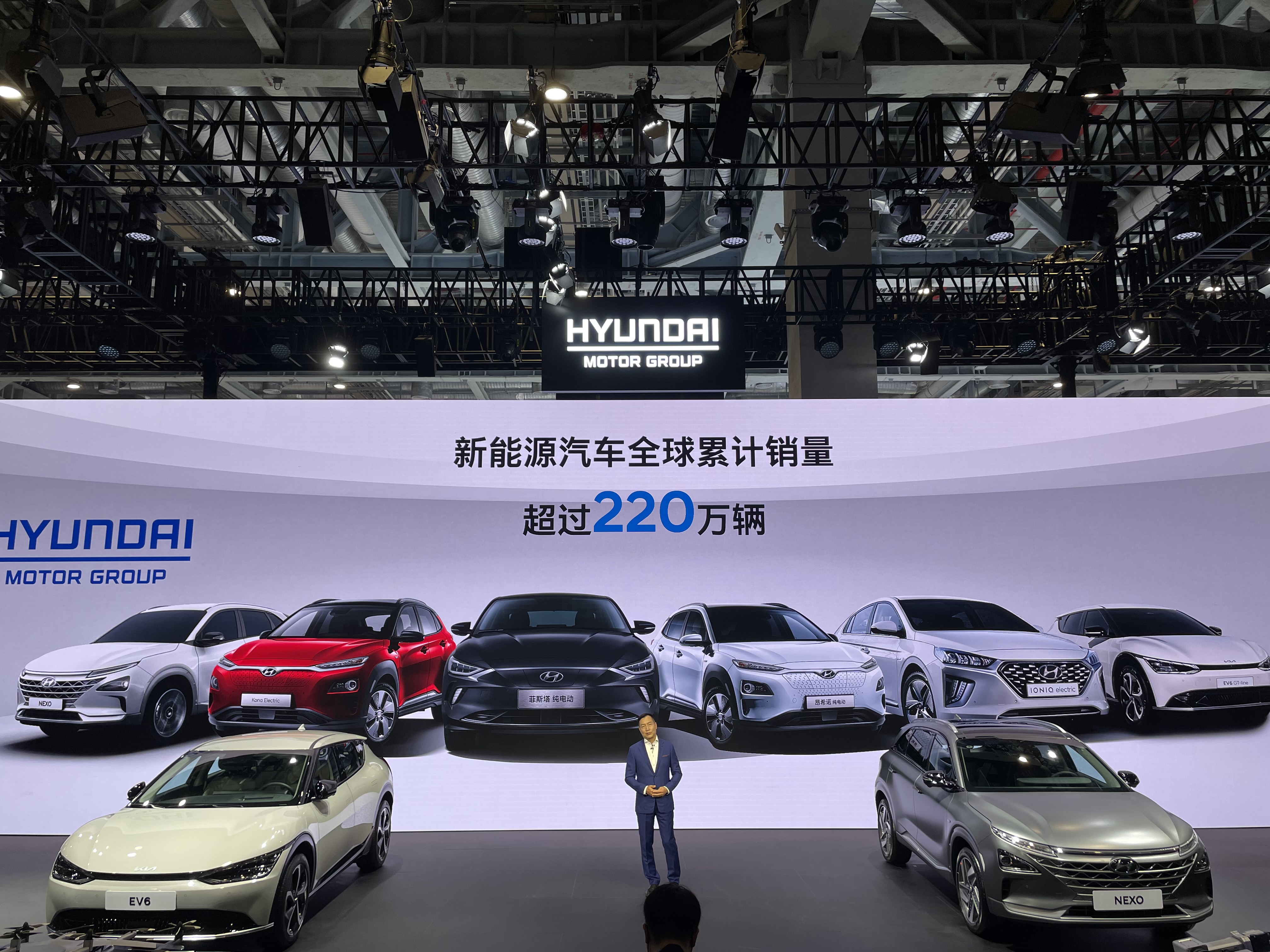
Last year, Hyundai’s new energy vehicle sales ranked fourth in the world.Why is hydrogen energy strategy higher? Because there is uncertainty in the use scenario of pure electricity, so “hydrogen + electricity” is a combination. Hydrogen is more strategically rich in the long run!
- How to ensure the safety of hydrogen energy in disasters?
Wu:
Modern hydrogen technology will also be applied in the aviation field with higher safety standards!
When applied to vehicles, extreme conditions will be tested. At the beginning, NEXO experienced extreme tests in the desert, mountains, and Siberia, and completed them.
Li:
The situation of hydrogen fuel cells is similar to that of electric vehicles. The infrastructure is relatively poor, but electric vehicles have taken a step ahead, so the situation is slightly better.
But it still depends on whether the policy supports nationwide promotion. At present, hydrogen energy is being promoted in various urban agglomerations (such as the Yangtze River Delta and the Pearl River Delta) in demo zones. The pilot period is currently 5 years, and the government will evaluate it in the future.
- Toyota is also doing hydrogen energy. Will Hyundai consider joining Toyota’s alliance?
Wu:
We have many collaborations worldwide, and various hydrogen energy standards have been involved in the formulation globally in Hyundai. In 2017, there were more than 170 hydrogen energy committees that had studied relevant research, and China Petroleum and Weichai also participated in research in China. Hope to establish contacts with the Chinese government in the formulation of hydrogen energy standards.
Li:
Actively participate in the policy guidance of demonstration zones and follow the policy. NEXO has been applied in South Korea.
- What can be promoted from NEXO’s experience in South Korea?
Wu:
There have been many demonstrations worldwide, including testing in Europe. Subsidies are currently available in various countries. China does not have many subsidies in the passenger car field (commercial vehicles are fine), but the direction is right. Hope to be given equal attention.
If the government departments and subsidies of other countries can be obtained in China, the hydrogen industry will develop rapidly. Fuel cell power generation has been prepared in South Korea, and hydrogen-fueled cars are also very useful.
When there are more pure electric vehicles, there may be more power outages. At this time, they may be useful.
- Is the Guangzhou factory only for production or for research and development?
It includes not only production and sales, but also the function of the innovation center. It contains independent testing functions, and certification is required with the government and third parties.
Source: Hyundai Motor Group
This article is a translation by ChatGPT of a Chinese report from 42HOW. If you have any questions about it, please email bd@42how.com.
